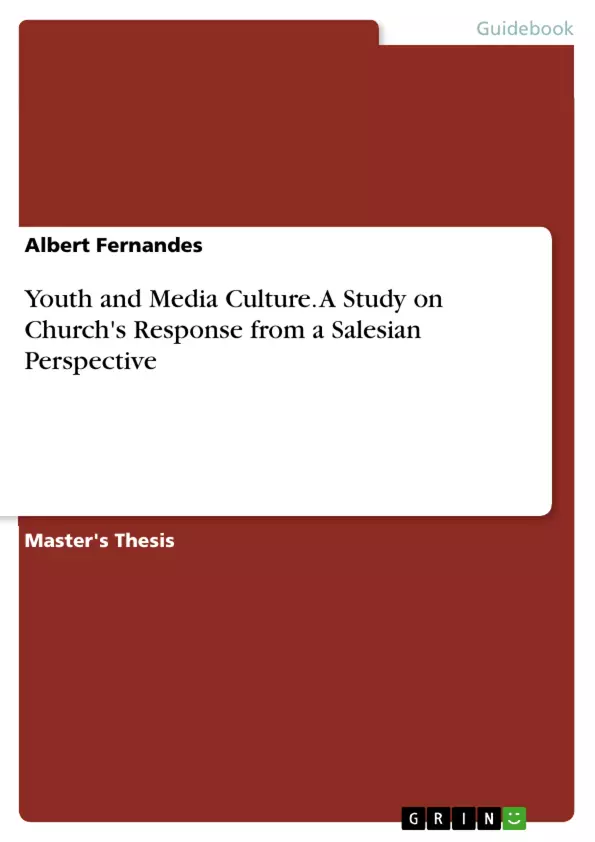What effect has the media had on your life? Most probably our answer would be: I am aware of the media, but I am not affected by it! What influence has your incredible exposure to the media had on your life and on the lives of the people with whom you live?
The rise of digital media and communications technologies have helped redefine experiences of space and time but, in terms of everyday cultural experience, they have supplemented rather than replaced ‘old’ media forms and integrated within youth’s existing cultures and social relationships. It has created a paradox of life, which needs to bridge.
There can be no doubt that media pervades social life. The audio-visual media, print and other communication technologies play major role in modern human existence, mediating diverse interactions between people. Moreover, they are numerous, heterogeneous and multi-faceted. Even more, we cannot deny that media are dynamic and ever changing, constantly reacting to economic and popular forces. The modes like news, advertising, film, radio, television, fashion, the book – have undergone an alarming sea of changes in recent years. [...]
Inhaltsverzeichnis (Table of Contents)
- GENERAL INTRODUCTION
- CHAPTER ONE
- ORIGIN AND DEVELOPMENT OF MEDIA
- Introduction
- Definition of Terms
- Mass Media
- Media Culture
- Media Development
- Function of Media
- Types of Media
- Basic Media
- Oral / Verbal
- Written
- Innovative Media
- Print Media
- News Papers
- Magazines and Periodicals
- Books
- Electronic Media
- Radio
- Television
- Digital TV
- Cable TV
- Motion Pictures and Videos
- Telecommunication
- Telephones
- Mobile Phones
- Computer Media
- Internet as the most Dominant Media of the Times
- Internet and India
- Internet Browsing
- Instant Messaging / Chatting
- E-Mail and Web Mail
- Web Mails
- Online Internet Chatting
- Distance Education
- Voice over Internet Protocol (VoIP)
- Online Entertainment
- Online Social Networking
- E-Advertising
- Networking of Computer and Cellular Phone
- Wireless Technology
- Wireless History
- Bluetooth Technology
- Conclusion
- CHAPTER TWO
- THE IMPACT OF THE MEDIA ON YOUTH
- Introduction
- India a Unique Cultural Society
- Media and India
- Indian Culture and Media Value System
- Socio-Cultural Situation in India
- Media Culture and Youth
- Diverse Effects of Mass Media: Values at Stake
- Consumerism
- Creating Global Concern
- Blind Ambition
- Conformity
- Preconception and Prejudice
- Culture of Violence
- Sexual Promiscuity
- Valueless Values
- Challenges of the Changing Media Culture
- Social Effects of Television Media
- Effect of Television on Children
- Effect of TV on Students and Youth
- Positive Impact
- Films and Serials as Art
- TV Programmes as Communication
- Negative impact
- Growth of Consumerism
- Precocious Sexual Stimulation
- Dress and Deportment
- Psychological Influence
- Violence in Movies/ Cinemas
- Impact of Advertisements
- Promotion of Violence
- Female Stereotypes
- Consumption of Tobacco and Alcohol
- Identity Crisis
- Haves and Have-nots
- Identifying with the West
- Impact on Family Life
- Electronic Indian Youth
- Use of Cell Phones
- Internet Media
- The Medium and Nature of Internet
- Internet a Medium of Great Concern
- Risks of Children on Internet
- Internet Impact on Youth
- Internet Addiction
- Cyber Sex
- Cyber Friendship
- Pornography
- Media and Religion of the Youth
- Positive Impact
- Negative Impact
- Media has a Narcotizing Effect
- Media and Individualism
Zielsetzung und Themenschwerpunkte (Objectives and Key Themes)
This dissertation explores the influence of media culture on youth from a Salesian perspective. It aims to examine the impact of various media platforms, such as television, internet, and mobile phones, on the lives of young people in India. The study focuses on the ways in which media shapes values, attitudes, and behaviors, highlighting both the positive and negative aspects of this influence.
- The evolving landscape of media and its impact on youth in India.
- The influence of media on the values and behaviors of young people.
- The role of media in shaping cultural and social trends among youth.
- The challenges and opportunities presented by media culture for youth development.
- The potential of the Church, particularly the Salesian Order, in addressing the challenges posed by media culture.
Zusammenfassung der Kapitel (Chapter Summaries)
Chapter One: Origin and Development of Media
This chapter provides a historical overview of the evolution of media, tracing its development from oral and written forms to the digital age. It examines the various types of media, including print, electronic, and digital, and analyzes their functions and impact on society. The chapter concludes with a discussion of the internet as a dominant force in contemporary media culture.
Chapter Two: The Impact of the Media on Youth
This chapter investigates the influence of media on youth in India, exploring the complex relationship between media culture and the socio-cultural realities of the country. It examines the diverse effects of mass media on values, attitudes, and behaviors, highlighting issues such as consumerism, global concern, blind ambition, conformity, and the potential for violence and sexualization. The chapter also delves into the specific impact of television and internet media on young people, including the risks associated with online activities and the potential for addiction and exploitation.
Schlüsselwörter (Keywords)
The core keywords and themes of this dissertation include media culture, youth, India, Salesian perspective, values, behavior, impact, influence, television, internet, mobile phones, social media, consumerism, violence, sexuality, cultural trends, challenges, opportunities, Church, and youth development.
- Citation du texte
- Albert Fernandes (Auteur), 2011, Youth and Media Culture. A Study on Church's Response from a Salesian Perspective, Munich, GRIN Verlag, https://www.grin.com/document/384241



